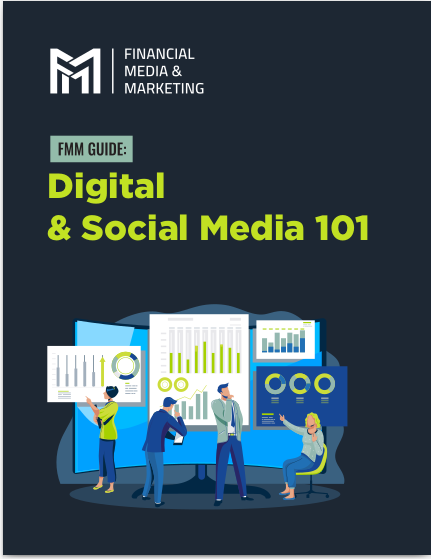Key Takeaways:
-
A weak or unclear call-to-action (CTA) can result in lost leads, reducing the effectiveness of your financial advisory website.
-
Optimizing your CTA with clear language, strategic placement, and compelling incentives can drive conversions and grow your client base.
Is Your Call-to-Action Failing to Deliver? Here’s Why It Matters
Your website is the digital front door of your financial advisory business. But if visitors aren’t turning into leads, the culprit might be your call-to-action (CTA). A poorly designed or vague CTA can cause potential clients to leave without taking the next step. In 2025, when competition in the financial industry is fiercer than ever, your website’s CTA needs to work harder to grab attention and drive engagement.
Understanding the Role of a CTA in Your Lead Generation Strategy
A CTA is more than just a button or a line of text; it’s the bridge between interest and action. If you’re not seeing the conversion rates you want, it’s time to examine what might be going wrong and how you can fix it.
Common Mistakes That Are Hurting Your CTA
-
Vague or Generic Wording – If your CTA says something like “Learn More” or “Get Started,” it lacks the urgency and specificity needed to compel action.
-
Poor Placement – CTAs buried at the bottom of the page or hidden within walls of text are easily overlooked.
-
Lack of Value Proposition – A CTA should communicate exactly what the visitor gains by clicking. If it’s not clear, users won’t be motivated.
-
Too Many Choices – Offering multiple CTAs with different actions can create confusion and reduce conversions.
-
Unoptimized for Mobile – With most website traffic coming from mobile devices, a CTA that doesn’t display well on smaller screens is a major problem.
How to Create a CTA That Converts
Now that you know what might be wrong with your current CTA, let’s go over how to fix it. A well-optimized CTA should be clear, action-oriented, and visually compelling.
1. Use Strong, Action-Oriented Language
Your CTA should tell users exactly what to do while creating a sense of urgency. Here are some improvements over generic CTAs:
-
Instead of: “Learn More”
Try: “Get Your Free Consultation Today” -
Instead of: “Get Started”
Try: “Secure Your Spot Before It’s Too Late”
Using strong verbs and specific wording ensures that users know exactly what to expect when they click.
2. Place Your CTA Where It Matters
Strategic placement ensures your CTA is seen and acted upon. Here’s where to position it for maximum impact:
-
Above the Fold – Place your CTA near the top of the page so it’s visible without scrolling.
-
At the End of Valuable Content – After blog posts, case studies, or service descriptions, include a CTA to encourage further action.
-
Within the Navigation Bar – A CTA in the header (such as “Schedule a Call”) makes it easy for visitors to take action at any time.
-
On Exit-Intent Popups – If someone moves to leave your site, a last-minute CTA can help retain potential leads.
3. Make Your CTA Visually Stand Out
Design plays a crucial role in whether or not a visitor clicks your CTA.
-
Use contrasting colors to make your CTA pop against the background.
-
Make buttons large enough to be noticeable but not overwhelming.
-
Incorporate white space around the CTA so it doesn’t get lost in clutter.
-
Use icons or arrows to draw attention to the CTA.
4. Offer an Incentive
People are more likely to take action if there’s a clear benefit. Consider offering:
-
A free financial review or consultation.
-
A downloadable guide on investment strategies.
-
Access to a webinar or exclusive insights on market trends.
-
A limited-time discount on financial planning services.
Adding urgency by including phrases like “Limited Availability” or “Offer Ends Soon” can further encourage immediate action.
5. Optimize for Mobile Users
Since mobile traffic continues to dominate in 2025, your CTA must be easy to tap and interact with on a smartphone or tablet.
-
Use large, clickable buttons that don’t require zooming.
-
Ensure fast page load times to prevent user frustration.
-
Make sure the CTA is above the fold on mobile screens.
-
Test how your CTA looks on different devices to ensure readability and ease of access.
Testing and Improving Your CTA Over Time
Even a well-crafted CTA should be tested regularly to ensure it’s performing optimally. Here’s how you can keep improving it:
1. A/B Testing
Run A/B tests to compare different CTA variations. Test:
-
Different wording (e.g., “Book a Free Call” vs. “Get Expert Advice Now”)
-
Button colors and sizes
-
Placement on the page
2. Analyze Click-Through Rates (CTR)
Monitor your CTA’s CTR to determine how well it’s working. A low CTR might indicate a need for better wording or placement.
3. Adjust Based on User Behavior
Use heatmaps and analytics tools to see where users are clicking and whether they’re ignoring your CTA.
Making Small Changes That Lead to Big Results
Your CTA might seem like a small part of your website, but it has a massive impact on conversions. Making simple adjustments to its wording, design, and placement can result in more leads and higher client engagement.
Ready to Improve Your Website’s CTA?
By optimizing your CTA with strong language, strategic placement, and a compelling incentive, you can turn more website visitors into clients. Take the time to analyze and test different variations, and you’ll see the difference in your conversion rates.










